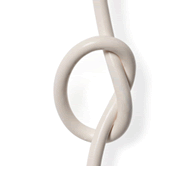- Birth control
- Sterilization
Sterilization

What is sterilization?
Sterilization is permanent birth control. It’s one of the most effective kinds of birth control available, but it’s also the biggest commitment. Sterilization is for people who are sure they will never want to get pregnant or get someone else pregnant. There are sterilization procedures both for people with a uterus, ovaries, and fallopian tubes (this procedure is called tubal ligation) and for people with testicles and a penis (this procedure is called vasectomy). Neither of these types of sterilization affects sexual pleasure or performance, and you can still orgasm after sterilization.
Quick Facts
-
Effectiveness
Sterilization is super effective—it’s one of the most effective ways to prevent pregnancy.
Perfect use: Over 99% effective
Typical use: Over 99% effective
What are perfect use and typical use?
-
Hormones
Sterilization is hormone-free.
-
Side effects
Possible pain or discomfort right after the procedure.
-
Cost
As low as $0 (with insurance) or as high as $6,000.
-
STI protection
Sterilization doesn’t protect against STIs.
-
Ongoing effort
Nothing you have to do once the procedure is done.
Types of Sterilization

Tubal ligation
Tubal ligation is a safe, effective, and permanent procedure for people with uteruses and fallopian tubes. It’s sometimes called “getting your tubes tied.” Your fallopian tubes are where your egg and a partner’s sperm meet, which can lead to pregnancy. To keep eggs and sperm apart, a health care provider will close off your fallopian tubes, remove a section of each of them, or remove both fallopian tubes entirely.
How tubal ligation is done depends partly on whether you’re doing it right after having a baby or not. But no matter what type of tubal ligation you have, it will involve some type of anesthesia, and recovery will take a few days.

Vasectomy
A vasectomy is a safe and effective sterilization procedure for people with testicles and penises. Vasectomies prevent pregnancy by permanently closing off the vas deferens, the tubes that carry sperm. That means sperm cannot get into the vagina during penis-in-vagina sex, and therefore pregnancy can’t happen.

We can help you find an in person provider or online birth control delivery service.
find health care